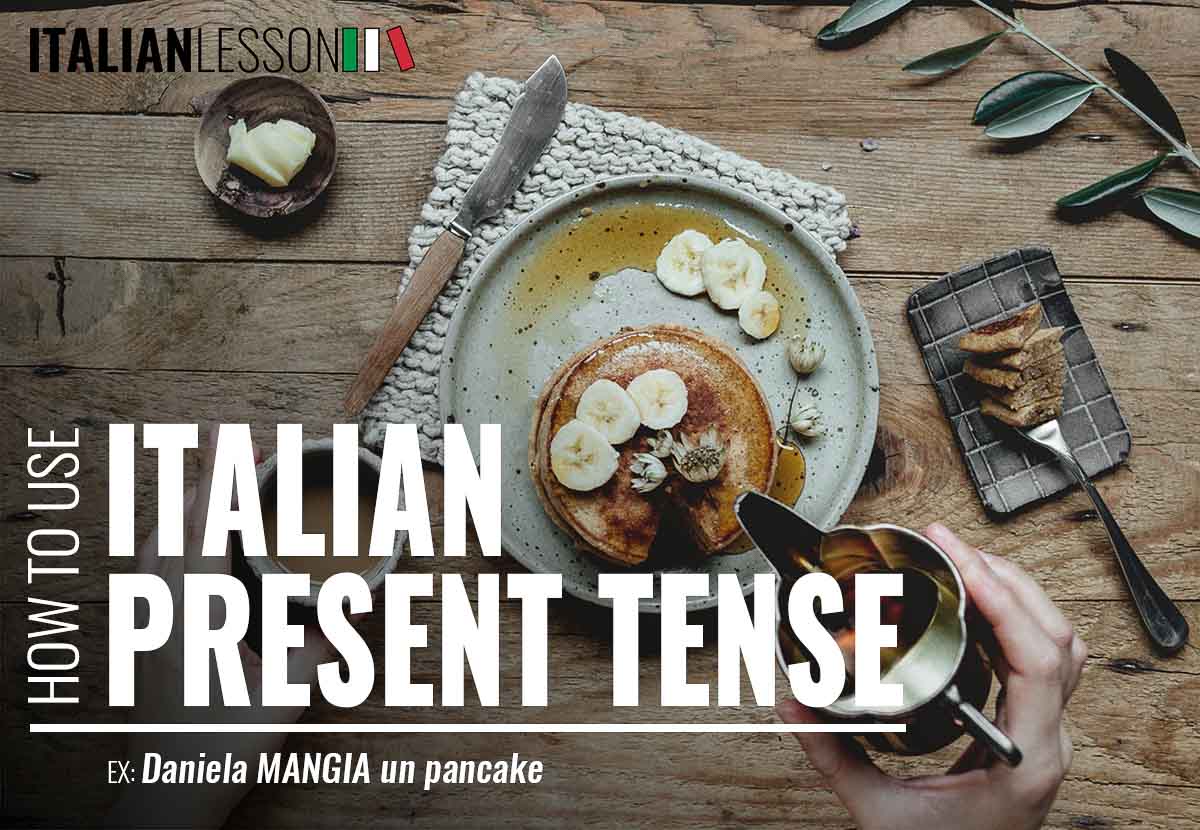
Learning Italian grammar never felt so easy. In this article I will explain the Italian present tense to you. Don’t worry, it will be full of examples to simplify the topic and I will guide you throughout this beautiful journey.
First of all, Italian, unlike English, is spoken the way that it’s written. This means that Italian pronunciation is important, of course, but once you have learned the phonetic rules, you can read every Italian word without hesitation or difficulty. But what is really vital to a language is the vocabulary. Italian vocabulary is more extended than the English. English is brief, quickly gets to the point, instead Italian seeks a luxurious way to accentuate the concepts.
Now we are going to talk about the Italian present tense, which is used to express actions that take place in the present.
How to use Italian present tense?
Francesco mangia una mela / Francesco eats an apple
There are other situations in which the Italian present tense is used. For example:
| to talk about habitual actions | Ogni mattina mi sveglio alle 7:30 / Every morning I wake up at 7:30 |
| to state scientific facts | Il sole sorge ad est / The sun rises in the east |
| to refer to actions that will take place in the future | Domani parto per Londra / Tomorrow I leave for London |
The Italian verb has the main role and the other elements follow it in the sentence. Therefore its form changes according to several rules. This change is called “conjugation”. The Italian verb conjugation varies depending on the Italian conjugation, that is affected by mood, person, tense, number, aspect and gender. There are three conjugations. The first group ends in -are, such as mangiare (to eat), the second in -ere, such as vivere (to live) and the third in -ire, such as dormire (to sleep).
Italian verb conjugation
| MANGI -ARE (To eat) | VIV -ERE (To live) | DORMI -IRE (To sleep) |
| Io mangi -o Tu mang -i Egli mang -ia Noi mang -iamo Voi mangi -ate Essi mangi -ano | Io viv -o Tu viv -i Egli viv -e Noi viv -iamo Voi viv -ete Essi viv -ono | Io dorm -o Tu dorm -i Egli dorm -e Noi dorm -iamo Voi dormi -ite Essi dorm-ono |
The last letters are the suffixes which are the same for all regular Italian verbs.
In English the personal pronouns are always expressed because there is no verb conjugation. Instead in Italian tense the subject of a sentence is indicated by the suffix, the ending of the verb.
(Io) scrivo canzoni (I write songs)
However in the Italian tense there are irregular verbs, such as andare (to go), rimanere (to remain) and dire(to say) that in the Italian present tense follow a different conjugation.
| AND -ARE (To go) | RIMAN -ERE (To remain) | D -IRE (To say) |
| Io vado Tu vai Egli va Noi andiamo Voi andate Essi vanno | Io rimango Tu rimani Egli rimane Noi rimaniamo Voi rimanete Essi rimangono | Io dico Tu dici Egli dice Noi diciamo Voi dite Essi dicono |
As stated before, Italian verb tenses have different rules compared to English. The most important one is the Italian verb conjugation, which apparently makes English easier to learn.
Here is another in-depth study:
https://it.wikipedia.org/wiki/Presente_indicativo
There are more Italian verb tenses than in English. The most common ones are the present (presente), imperfect tense (imperfetto https://italianlesson.it/how-to/italian-verbs/italian-imperfect-tense/) and the future tense (futuro https://italianlesson.it/how-to/italian-verbs/italian-future-tense/).
I hope you’ve enjoyed my work and thank you for your time. I suggest you read and practise and then you will be a perfect Italian speaker!
